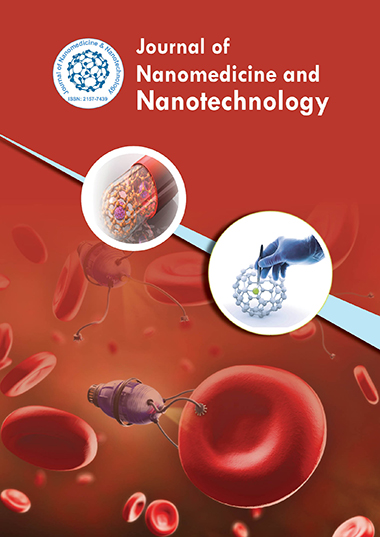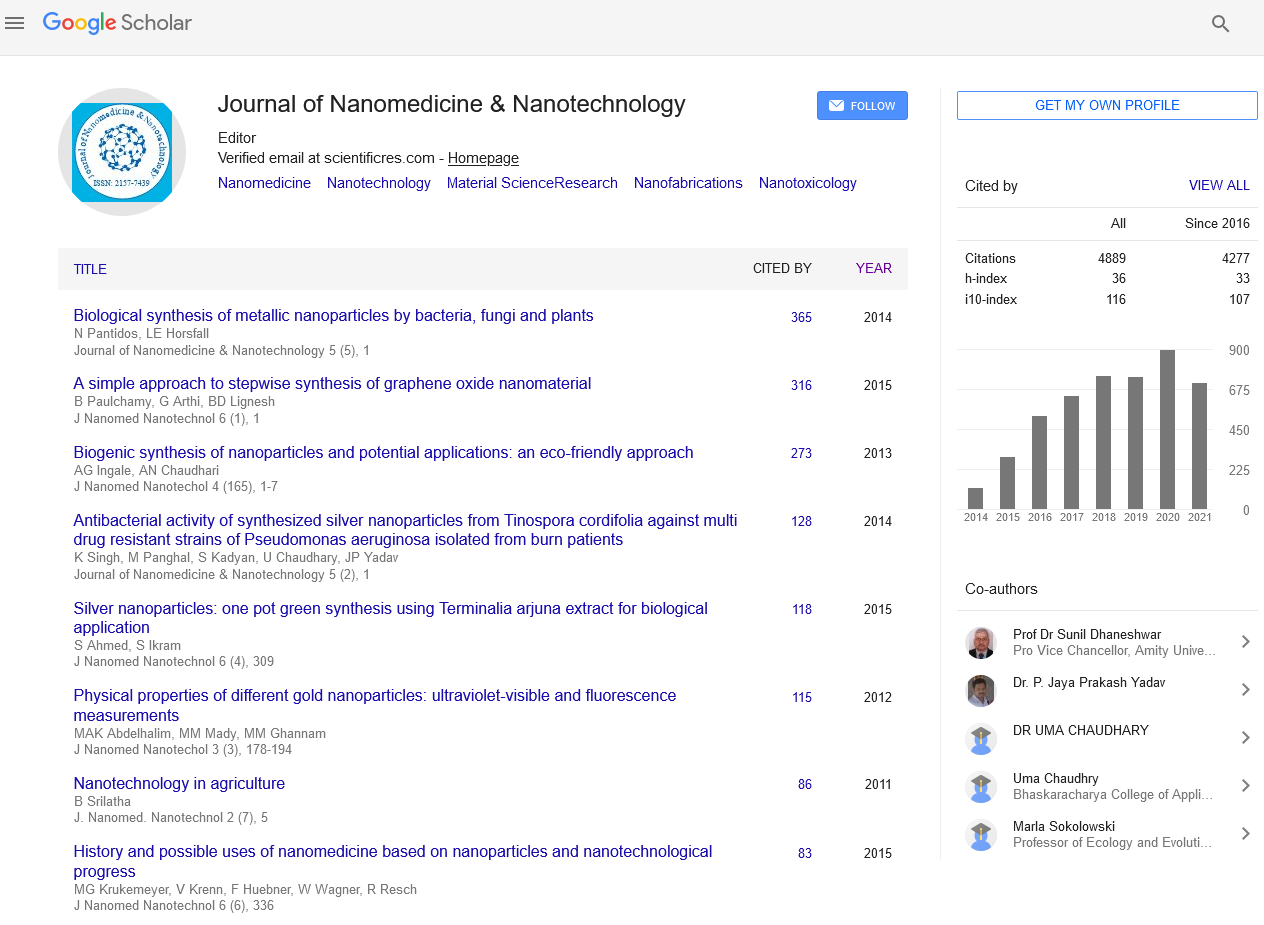Indexed In
- Open J Gate
- Genamics JournalSeek
- Academic Keys
- JournalTOCs
- ResearchBible
- China National Knowledge Infrastructure (CNKI)
- Scimago
- Ulrich's Periodicals Directory
- Electronic Journals Library
- RefSeek
- Hamdard University
- EBSCO A-Z
- OCLC- WorldCat
- SWB online catalog
- Virtual Library of Biology (vifabio)
- Publons
- MIAR
- Scientific Indexing Services (SIS)
- Euro Pub
- Google Scholar
Useful Links
Share This Page
Journal Flyer

Open Access Journals
- Agri and Aquaculture
- Biochemistry
- Bioinformatics & Systems Biology
- Business & Management
- Chemistry
- Clinical Sciences
- Engineering
- Food & Nutrition
- General Science
- Genetics & Molecular Biology
- Immunology & Microbiology
- Medical Sciences
- Neuroscience & Psychology
- Nursing & Health Care
- Pharmaceutical Sciences
Abstract
Nanoparticle-Mediated Photothermal Therapy for Tumor Ablation
Photothermal therapy (PTT) is a promising non-invasive cancer treatment modality that leverages light energy to generate heat, which can effectively ablate tumor cells. Recently, the use of nanoparticles in photothermal therapy has garnered significant attention due to their unique optical properties, such as strong light absorption and efficient conversion of light into heat. This ability allows nanoparticles to specifically target tumor sites and induce localized hyperthermia, thereby enhancing the selectivity and effectiveness of cancer treatments. Nanoparticles, including gold, carbon-based materials, and transition metal dichalcogenides (TMDs), are often employed as photothermal agents due to their ability to be functionalized for targeted delivery, as well as their excellent biocompatibility and tunable optical properties. This article explores the mechanisms, types of nanoparticles, strategies for enhancing PTT efficacy, and challenges in clinical translation, along with the future directions of nanoparticle-mediated photothermal therapy for tumor ablation.
Published Date: 2024-11-30; Received Date: 2024-11-02


